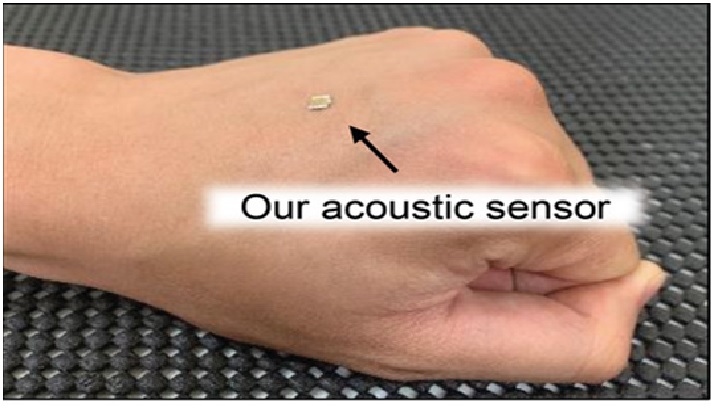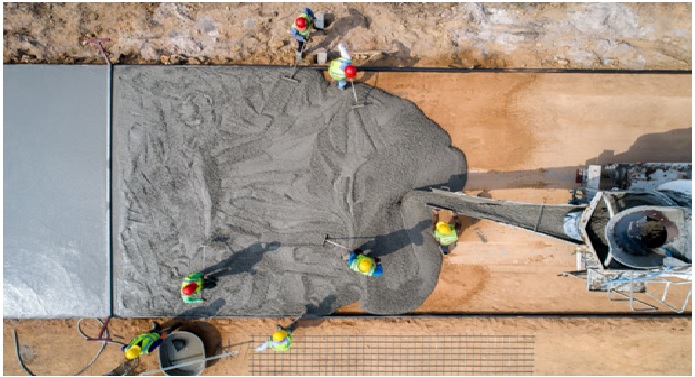New Skinny Microphone Proves a Wider Hearing
A researcher, Professor Kilwon Cho and Dr. Seon Lee from the Department of Chemical Engineering, together with Professor Wonkyu Moon and Dr. Junsu Kim from the Department of Mechanical Engineering, POSTECH developed microphone which detects sound by applying polymeric materials to microelectromechanical systems (MEMS).

Figure 1: Microphone which detects sound by applying polymeric materials to MEMS.
Figure 1 shows that A small, thin microphone exhibits a wider hearing field than human ears, while it can be easily attached to the skin.
Conventional MEMS-based microphones used in cell phones, Bluetooth devices, and others consist of a thin, small, and complex diaphragm. However, because they are made of hard, fragile silicon, it is difficult to bend the diaphragm or microphone at will, which hinders the device’s ability to detect sound. [1]
The research team overcame this limitation by creating a MEMS-based microphone structure by using polymer materials that are more flexible than silicon and can be designed in any shape. The size of the device is a quarter of a fingernail and its thickness is only a few hundred micrometers (μm, 1μm=one-millionth meter). The microphone can be attached to large surface areas of the body or even on the finger.
According to the study, the auditory sensitivity of the microphone is higher than human ears, while recognizing the surrounding sounds and voice of the user without distortion. Furthermore, it can detect both loud sounds over 85 decibels, a range that causes auditory damage, and low-frequency sounds that humans cannot hear. [2]
The quality of voice detection is comparable to cellular phone or studio microphones. When the acoustic sensor on the skin was connected to a commercial voice assistant program (Google Assistant), the user could search, translate and control devices effortlessly.
The new acoustic sensor has potential applications in wearable voice recognition devices for the Internet of Things (IoT) and human-machine interfaces. The research team plans to create auditory electronic skin by integrating it with skin-attachable pressure and temperature sensors, flexible displays, and others. [3]
References:
- https://illinoisusanews.com/a-research-team-is-developing-a-sound-sensor-that-attaches-to-the-skin/26694
- https://thediscovernews.in/research-team-develops-a-sound-sensing-skin-attachable-acoustic-sensor/
- https://newsazi.com/hearing-better-with-skin-than-ears-research-team-develops-a-sound-sensing-skin-attachable-acoustic-sensor/?noamp=mobile
Cite this article:
Sri Vasagi K (2022), New Skinny Microphone Proves a Wider Hearing, AnaTechMaz, pp.198















